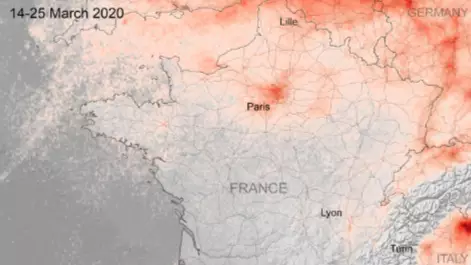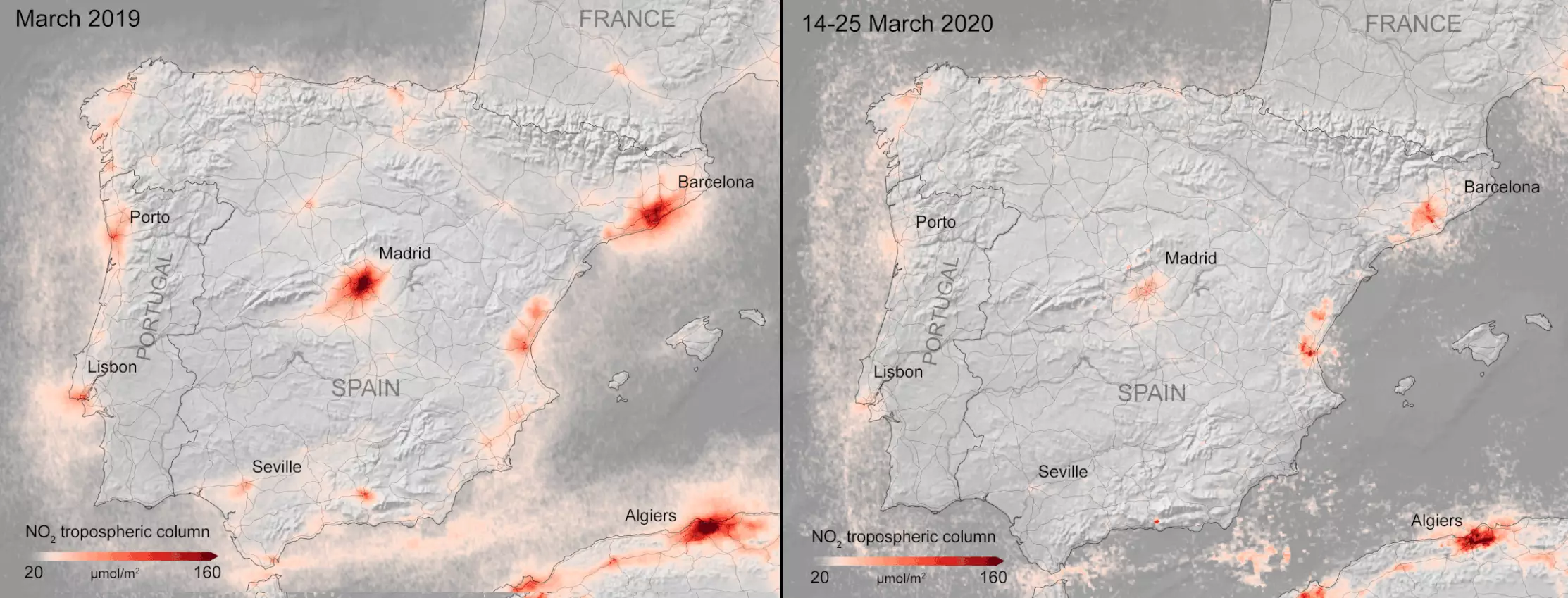
Satellite images taken by the European Space Agency show the impact lock down has had on air pollution levels across a number of cities.
Images from the ESA Copernicus Sentinel-5P satellite shows a big drop in the levels of nitrogen dioxide in cities such as Paris, Milan and Madrid, all of which currently have isolation measures in place due to the coronavirus outbreak.

The satellite has been collecting data on air pollution across the continent since the outbreak happened and has shared images showing the 'significant drop'.
Advert
Scientists from the Royal Netherlands Meteorological Institute (KNMI) have been analysing the satellite data to look at weather and air pollution.
The researchers have looked at images showing nitrogen dioxide levels from 14 to 25 March alongside images showing the monthly average of concentrations from last year.
Speaking about the findings KNMI's Henk Eskes said: "The nitrogen dioxide concentrations vary from day to day due to changes in the weather. Conclusions cannot be drawn based on just one day of data alone.

"By combining data for a specific period of time, 10 days in this case, the meteorological variability partly averages out and we begin to see the impact of changes due to human activity.
Advert
"The chemistry in our atmosphere is non-linear. Therefore, the percentage drop in concentrations may differ somewhat from the drop in emissions.
"Atmospheric chemistry models, which account for daily changes in weather, in combination with inverse modelling techniques are needed to quantify the emission based on the satellite observations."

Eskes and the team are working with scientists across the globe to pull together a more detailed analysis, which they will then use to estimate the impact the lock down measures have had on the environment.
Advert
Last week, ESA released a video showing the sharp decrease in air pollution over China when the country went into shut down and then its return when the measures were eased off.
The animation showed nitrogen dioxide emissions, which are produced by the burning of fossil fuels over China, between 20 December and 16 March.
ESA reported: "The drop in concentrations in late January is visible, coinciding with the nationwide quarantine and from the beginning of March, the nitrogen dioxide levels have begun to increase."
Featured Image Credit: ESATopics: World News, Coronavirus